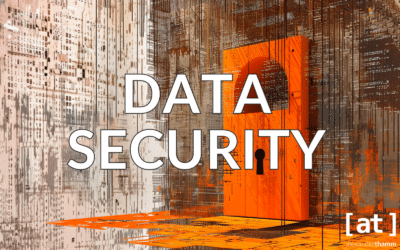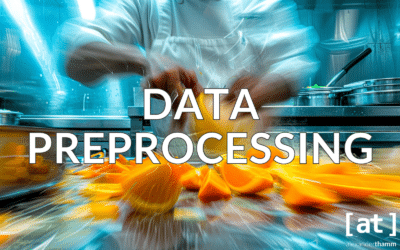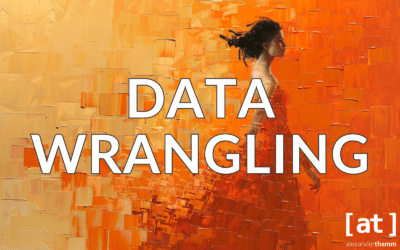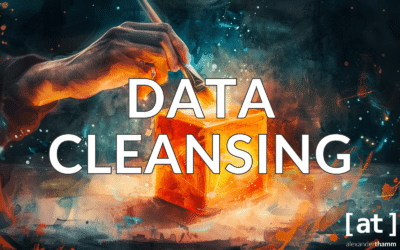Data mining has become an important process in many organisations, helping to uncover valuable knowledge hidden in large amounts of data. Due to the reliable data-driven decisions that organisations can make, data mining has become one of the key drivers of business growth and innovation. This article explains data mining, including its derivation, techniques and tools, advantages and disadvantages and application examples.
Inhaltsverzeichnis
What is data mining?
Data mining is a Process in which a large amount of data is converted into useful informationby recognising hidden patterns or trends in the Dataanomalies and correlations are uncovered. Various technologies are used for this, including artificial intelligence and machine learningclustering and classification, statistical methods and databases. Data mining is also known as Knowledge Discovery in Data (KDD) and enables companies to make informed decisions, predict future behaviour with the help of predictive models and use the data for many other applications.
Data mining methods
Data mining uses a variety of techniques to gain valuable insights from large data sets. Here are the most commonly used methods:
- ClassificationThis method assigns each data point to a predefined category or class. It is a supervised learning technique, i.e. the model is trained on a labelled data set to recognise patterns and classify new data accordingly. Applications of classification include spam detection, customer segmentation and credit scoring.
- ClusteringUnlike classification, clustering groups data points based on their similarities without predefined categories, making it an unsupervised learning technique. It helps to discover hidden patterns or groupings in data. Use cases for clustering include market research, image segmentation and anomaly detection.
- RegressionThis technique is crucial for predicting continuous outcomes based on the relationships between variables. It is widely used in forecasting scenarios such as sales forecasting, risk assessment and price estimation. The regression can be linear or non-linear, with each type suitable for different data patterns.
- Association rule miningThis method uncovers interesting relationships between variables in large data sets. It is particularly useful for analysing shopping baskets and helps companies to understand the purchasing habits of their customers and develop effective cross-selling strategies.

Step into the world of text mining: our blog post guides you through algorithms, methods and the pros and cons of this indispensable process for companies.
Data mining algorithms
Several algorithms are used in the methods mentioned above. Here are some of the most important algorithms:
- Decision trees: Decision trees are used for both classification and regression and split data on the basis of certain decision criteria. They are easy to interpret, but can also be over-customised. They are used in customer relationship management, fraud detection and medical diagnosis.
- Random ForestsAn ensemble learning method that uses multiple decision trees to improve prediction accuracy. Random Forests are less susceptible to Overfitting and are used in various areas such as banking, stock market forecasts and e-commerce.
- Support Vector Machines (SVM): SVMs are mainly used for classification problems and are effective in high-dimensional spaces and robust against overfitting in medium-dimensional spaces. They are frequently used in the categorisation of texts, the classification of images and in bioinformatics.
- K-Means clusteringA popular clustering algorithm that divides data into K-different clusters based on the similarity of features. It is often used for customer segmentation, document clustering and image segmentation.
- Hierarchical clusteringThis algorithm creates a tree of clusters, a so-called dendrogram, which is useful for hierarchical data analysis and is used in gene expression analysis, social network analysis and market research.
- K-Nearest Neighbour (KNN)A simple but effective algorithm for both classification and regression. KNN finds the closest data points based on distance metrics. It is used in recommendation systems, pattern recognition and data mining.
- Neural networksThese algorithms model the neuron connectivity of the human brain in order to recognise complex patterns and perform classifications. Neural networksin particular Deep learning modelsare powerful when processing large and complex data sets. They are used in areas such as speech recognition, image recognition and natural language processing.
The data mining process
From defining the business objective to extracting valuable information, the data mining process involves several steps. Firstly, the business objective of the data mining process must be clearly defined.
- Definition of the business objective or problemsDefine the organisation's main problem and any sub-problems that the organisation or individual is trying to solve. Stakeholders and data scientists must be involved in investigating and deciding on the exact business problem. This step helps to identify the data to be collected, define the parameters, select the techniques to be used and finally align the data mining process with the business strategy.
- Data acquisitionOnce the business objective is clearly defined, you know what data to collect. Data can come from various sources, such as Databasesfiles and folders. Collecting and storing this data in a single repository is important to facilitate the next steps.
- Prepare dataData in its raw form cannot be analysed. Once the relevant data has been collected, it is therefore important to cleanse it. Depending on the type of data, this may include cleansing steps such as removing noise, irrelevant and duplicate data, dimensionality reduction and handling missing values.
- Selection of features and modelAnother important step in the data mining process is the selection of the features or the Feature engineeringThe process of identifying the characteristics of the data that are relevant for input into the model. During this process, redundant or irrelevant features are eliminated so that the model accuracy and the efficiency of training the model are increased. Based on the problem definition, the transformed data and previous research, data scientists must then decide which model to use.
- Training, evaluating and using the modelEnter the prepared data into the selected model, train the data and evaluate it using techniques such as validation and cross-validation. Adjust the parameters and weights according to the results to achieve the highest prediction accuracy and efficiency. The correctly trained model is then used in the production environment for pattern recognition.
- Pattern recognitionBased on the model results, data scientists identify interesting relationships between data, such as patterns, anomalies, correlations and association rules. The identified patterns are evaluated based on the objectives defined in the first step.
Data mining tools
Several data mining tools have been developed with which complete data mining workflows can be designed and created.
| Software | Description |
| Weka | A Java-based, open-source tool widely used in academic research that helps with various data mining tasks. It has a very easy-to-use user interface with various algorithms for machine learning and feature selection. It also offers data visualisation functions and numerous extensions and plugins. |
| RapidMiner | An open-source and efficient data mining platform with an intuitive user interface. With RapidMiner, you can easily automate data mining tasks, including model training, feature selection and pre-processing of data. It enables the integration of data from various sources such as Hadoop file system data, Excel spreadsheets and databases |
| Orange | A popular open source data mining tool based on the Python language. It provides a visual interface for creating data mining workflows using various data visualisation techniques. In addition to the usual machine learning models, it also offers ensemble learning techniques. |
| KNIME | A powerful tool for data mining that uses a node system to create workflows. It also offers multiple data connectors to integrate data from different sources. Users can create and execute workflows via an intuitive user interface. |
How are data mining and data warehousing connected?
Data mining and Data warehousing have different meanings, but are linked to each other. Data mining aims to discover patterns, correlations and insights from large data sets. Algorithms and statistical methods are used to analyse data and extract useful information.
In contrast, data warehousing stores and manages large amounts of data from various sources within an organisation. The main objective is to make data analysis as efficient as possible. Data warehousing therefore offers the possibilities for data mining with the necessary infrastructure to consolidate and manage the data in a single database. Both are also fundamental processes for Business Intelligence (BI).

A comprehensive look at business intelligence: how companies can make informed decisions and react quickly to market dynamics by analysing and visually processing data.
Advantages and disadvantages of data mining
When used effectively, data mining brings many advantages for companies. Here are the most important advantages of data mining.
Advantages
- Improving the decision-making processData mining enriches decision-making with data-driven insights based on reliable data. By understanding trends and patterns, decision-makers can significantly improve the quality of decision-making in organisations and other areas.
- Predictive powerData mining enables companies to perform predictive modelling using the extracted data. These predictions can help organisations manage risk, avoid potential application downtime and build better customer relationships.
- Efficiently analyse large amounts of dataIn the first steps of data mining, a large amount of data is converted into a processable format. By automating the data mining process, valuable information can be extracted from this data in less time.
- Provision of reliable informationData mining uses extensive data and not just a small sample. It also uses machine learning algorithms and statistical methods that have been tried and tested in various fields and have proven to be effective. This significantly improves the reliability of the results.
- Offers room for innovationPatterns discovered can open up new growth ideas or market opportunities for companies and give the company a competitive advantage in the long term.
Disadvantages
Despite the numerous advantages that data mining brings for companies, it also poses a number of challenges.
- Costs and effortData mining requires considerable investment in data storage, model creation and maintenance, computing power for data processing and model training, etc. The development and maintenance of data mining systems can therefore be expensive.
- Data protectionSome data to be used for data mining may contain sensitive personal information. Processing such data can be a challenge due to data protection concerns and legal issues.
- Complexity of the model and scope for interpretationSome of the algorithms and tools used in data mining can have a long learning curve. For example, deep learning models can be complex and some statistical methods require specialised knowledge. The results obtained from data mining can also be complex and difficult to interpret without specialised knowledge.
- Low data qualityData mining results depend heavily on the quality of the data. Inaccurate, incomplete and distorted data can lead to misleading information.
What are the benefits of data mining for companies?
As discussed in the previous section, data mining has several benefits, including improved decision making, predictive power, efficient data analysis and reliable information. The following are some key uses of data mining in business intelligence.
- Analysing market trendsData mining enables companies to recognise market trends and predict future developments. This helps companies to plan their business strategies accordingly.
- Identification of risksBased on patterns from past events, companies can recognise potential risks and develop strategies to avoid them or change their business direction.
- Optimisation of various business processesHelps to optimise processes such as resource allocation, shopping basket analysis and stock management.
Examples of data mining applications
Data mining is used in various application areas, including healthcare, retail, marketing and education.
- Detection of anomalies and fraudData mining is used to recognise anomalies and fraud in many areas of application. For example, unusual patterns in credit card transactions in banking and finance can indicate fraud attempts. Anomalous patterns in network traffic can also indicate cyber attacks or unauthorised access to networks.
- Retail and marketingData mining is often used to improve product sales in the retail and marketing sectors. Customer buying patterns identified from purchase data help companies to optimise product inventories and discover cross-selling products. Data mining also helps to create effective marketing campaigns.
- HealthcareData mining from many patient records is used to recognise disease trends, predict patient diagnoses and improve patient care. Companies involved in drug development can develop new drugs by analysing chemical data sets. Data mining is also very helpful in recognising global disease trends, e.g. disease outbreaks.
- EducationData mining has proven to be helpful in improving student performance in many ways. Based on student performance data, educational institutions can identify at-risk students and predict their results. Data mining also helps in creating referral programmes that recommend courses and further exams for students to improve their knowledge.
- Social mediaSocial media data mining: by analysing large amounts of user interaction data, various social patterns and trends can be identified. Social media data mining also helps to analyse sentiment and predict events. In addition, user profiles created with the help of data mining can be used to create targeted advertising.
The future of data mining and its impact on the business world
Data mining aims to extract valuable information from large data sets. The process involves defining problems, collecting and cleansing data, developing and evaluating models and recognising patterns. This article has highlighted the various advantages and disadvantages of data mining, with particular emphasis on the importance of data mining for organisations in the field of business intelligence. Data mining is used in a number of business areas and is characterised by various techniques and tools. There is also a close connection between data mining and data warehousing, as the latter provides the necessary resources and processing capacities for efficient data mining. Data mining is therefore proving to be an essential element for companies to analyse complex data and derive strategic business decisions from it.











0 Kommentare